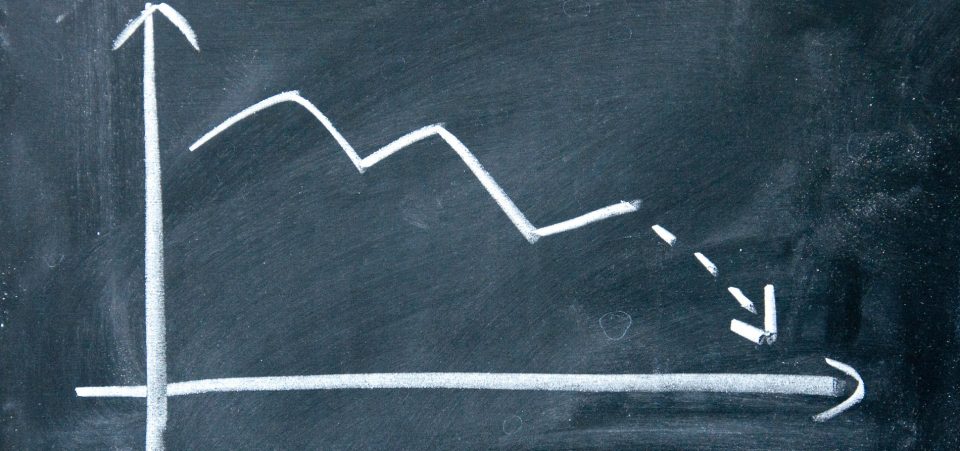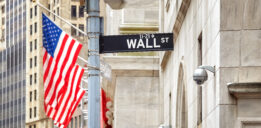Tony James Predictions
Blackstone Group LP (NYSE:BX) President and Chief Operating Officer Tony James says that U.S. stocks are about to shift course. Tony James’ predictions are for Wall Street to go bearish. James did not use complicated models or soothsayers to reach that conclusion. Bluntly, he merely pointed out that the stock market is overvalued. He expects a market correction ranging from 10%-20%. (Source: “Here’s the Logic Behind a Private Equity Billionaire’s Dramatic Stock Prediction,” Fortune, February 5, 2018.)
James suggested that all the optimistic efforts that some analysts continue to exert to defend the high-flying stock prices are pointless. The cheerful tunes that most analysts are singing mask a malaise. Or, better, they mask a trap. That trap consists of the interest rate, which James expects to start rising very quickly now.
Low interest rates, or quantitative easing as the quiche and caviar set call it, were already stimulus enough. The Trump tax cuts have done to the economy what too much video game activity does to a young child; they overstimulated it. Yields from Treasuries have already been sending all the scary signals.
They are getting too high, hovering around the 2.8% level. It will be hard to stop a Treasury market crash. The problem is that the current mega-bull market has been made possible because of the tight lid on interest rates for almost a decade. Margin calls and investing loans are going to cost more and investors will sell off what they can.
Stock Market Correction
The harbinger of the coming market correction, which will bring back the stock market bear investors believed had gone into permanent hibernation, is inflation. What is a market correction? It’s a 10% drop in stock prices from current highs. Should the markets drop by an additional 10%, investors can assume that the bear market has arrived.
To put it in recent perspective—that is, forgetting the 1929 crash—the last 10% correction occurred in 2015 and it came from China. But stocks recovered by 2016, avoiding a recession. The last bear market started in 2008. We usually call it the financial crisis, the Great Recession, or what it really was: the Undeclared Depression.
The Overvaluation of Wall Street
What about now? What are the stock market 2018 predictions? While Tony James is convinced that stocks are heading for a fall, other analysts continue to deliver a convincing rendition of the bull market—and it seems like it from the rapid recovery after the February 5 losses—when they describe the present risks in the market and the economy.
Thus, when reading the comments of analysts and insiders, it’s clear there is no unity of views. At least for the stock market prospects. It’s a question of faith, it seems. Those who favor the small or temporary market correction explanation are ready to pick up where they left off. Bitcoin’s apparent—we shall see for how long—recovery after losing some 40% of its value in a week is symptomatic of this optimism.
But those like Tony James, who expect a major correction and possibly a recession, have already decided that stocks are too expensive. The former category, the optimists, believe that President Trump’s economic growth stimulus through lower taxes will work. They have simply chosen to rule out inflation. Still, the average price-to-earnings (P/E) ratio is about 27 times the earnings, almost 30% higher than previous averages.
Are the Fundamentals as Good as Some Say?
The optimists, the bulls, would counter James’ argument. They might point to the fact that stocks on Wall Street are high because the S&P 500 companies saw an average of over-seven-percent revenue and 13% earnings growth in 2017. These same companies see even higher earnings for 2018. As for the tax cuts, they say that U.S. businesses will be able to divert more resources to growth. The big multinationals, meanwhile, can now start using the U.S. as a tax haven instead of parking their money abroad.
No doubt, everything seems great. And for the most part, the arguments are not incorrect. The problem is that while the fundamentals are favorable and the world economy itself is growing—the European Union laggards, for example, appear to have finally come out of the recession—the stock valuations are already too high. In other words, the current prices already reflect the rosy scenarios that have not arrived yet.
Thus, either the stock market stays completely flat or it drops so it can grow again. The tax cuts are the big risk, however. They benefit corporations and the already wealthy. Had they focused on improving the take-home pay of the average U.S. worker and the “middle class,” by limiting the benefits to the middle and bottom tiers of American society, the ones who have less money to invest in the stock market, it would have supported the economy from the ground up.
But the cuts have been applied now; they risk driving up the U.S. debt and inflation, which will hurt the middle and lower strata of society, stunting their growth. It’s no good if U.S. wages rise, as the January jobs report indicated, only for the costs of housing, gasoline, heating, food, and clothing to rise even faster.
The Fed seems to be ready to halt inflation, raising interest rates. This will, again, affect the middle and lower classes more, making their mortgages, car loans, and credit card debts more difficult to service and afford. Ray Dalio, one of the world’s top hedge fund managers, expects the inflation fears to lead straight to the biggest bond crash of the past 40 years. That’s why sentiment could quickly turn toward the bear.






